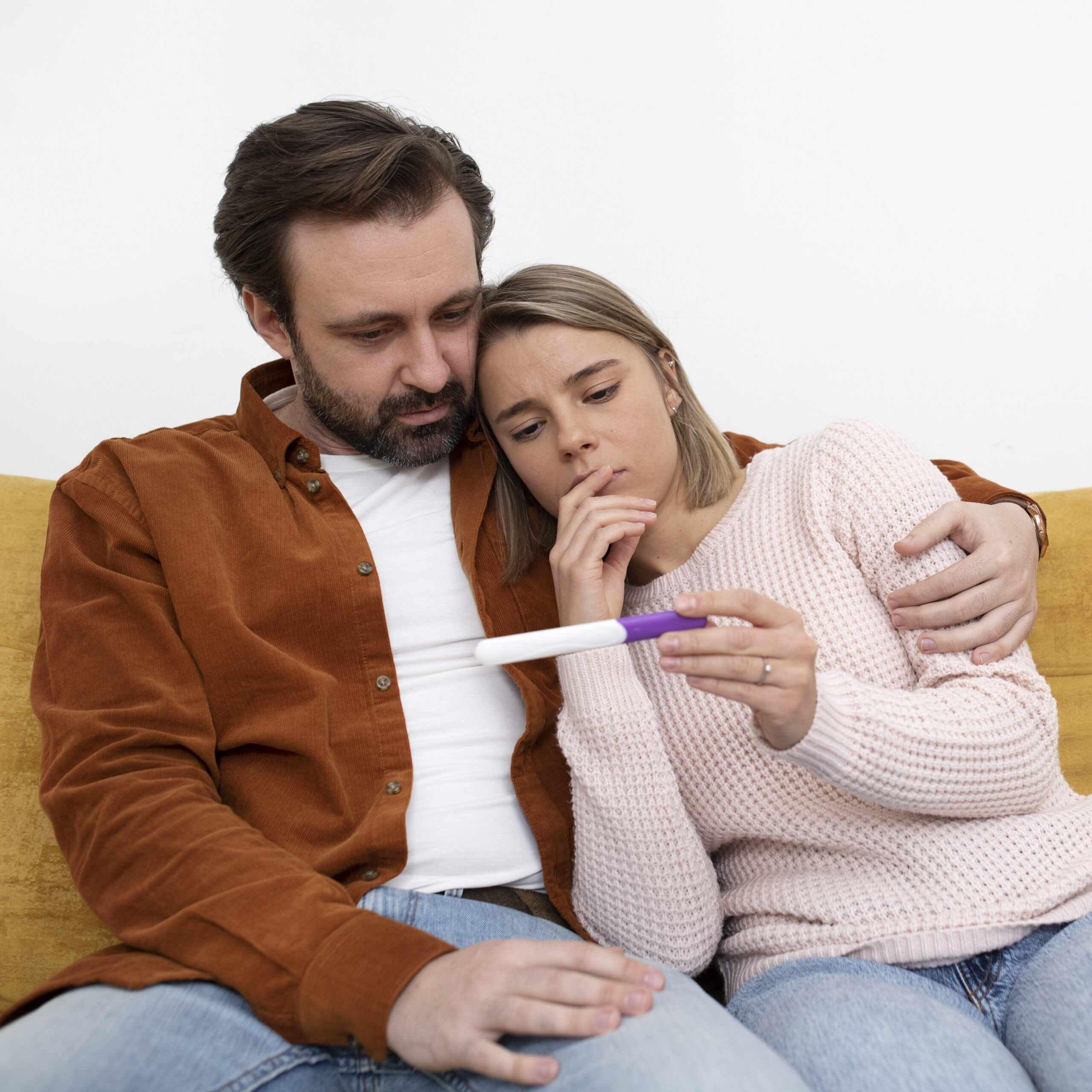Taking a pregnancy test can be an exciting and nerve-wracking moment. Whether you’re hoping for a positive or negative result, timing your test is crucial for accuracy. This guide will provide detailed information about the right time to take a pregnancy test, how pregnancy tests work, and tips to ensure you get the most accurate result.
1. How Pregnancy Tests Work
Pregnancy tests work by detecting the presence of the hormone human chorionic gonadotropin (hCG), which your body produces shortly after a fertilized egg attaches to the uterine lining. Levels of hCG rise rapidly in the early weeks of pregnancy, doubling every two to three days.
Types of Pregnancy Tests
- Urine Tests (Home Pregnancy Tests): These are available over-the-counter and detect hCG in your urine. Most modern pregnancy tests can be used from the first day of a missed period.
- Blood Tests (Clinical Pregnancy Tests): These are performed at a doctor’s office and detect even smaller amounts of hCG. They are typically used if there’s a need for early or very accurate detection.
2. When Is the Best Time to Take a Pregnancy Test?
Ovulation and Conception
To determine the best time to take a pregnancy test, it’s important to understand your menstrual cycle. The average cycle lasts 28 days, with ovulation occurring around day 14. Conception can occur when an egg is fertilized within 24 hours after ovulation, and the fertilized egg then implants in the uterus around 6-10 days after ovulation.
- Best Time to Test: For the most accurate results, you should take a pregnancy test after you’ve missed your period. This is usually about two weeks after ovulation and allows enough time for hCG levels to build up in your body.
Testing Before a Missed Period
Some pregnancy tests are marketed as « early detection, » claiming to work up to 6 days before your missed period. While they can sometimes detect lower levels of hCG, there’s a higher chance of getting a false negative because hCG levels may not yet be high enough to trigger a positive result.
First Morning Urine
The concentration of hCG is highest in your first morning urine, making it the ideal time to take the test for accurate results, especially if you’re testing early.
3. Common Mistakes to Avoid When Testing for Pregnancy
While home pregnancy tests are highly accurate when used correctly, certain mistakes can lead to inaccurate results. Here are some common errors:
- Testing Too Early: If you take the test too early, your hCG levels might not be detectable, leading to a false negative.
- Not Following Instructions: Always read the instructions for the specific pregnancy test you’re using. Some require you to dip the test into urine, while others require you to hold the test stick under the urine stream.
- Diluted Urine: Drinking too much water before testing can dilute your urine and lower the concentration of hCG, leading to inaccurate results.
- Interpreting the Results Too Soon or Too Late: Many tests suggest reading the results within 3-5 minutes. Reading the result too early or waiting too long can give you false positives or false negatives due to evaporation lines.
4. What to Do If You Get a Negative Result But Still Feel Pregnant
If you take a pregnancy test and it’s negative but you still suspect you’re pregnant, here’s what you can do:
- Wait a Few Days and Test Again: If you test too early, your body may not have produced enough hCG to be detected. Wait 2-3 days and take another test.
- Check for Pregnancy Symptoms: Early pregnancy symptoms like nausea, sore breasts, and fatigue can start before you get a positive test. If these symptoms persist, consider taking another test or seeing your doctor.
- Visit Your Doctor for a Blood Test: A blood test at your doctor’s office can detect lower levels of hCG and provide a more accurate result.
5. Understanding False Positives and False Negatives
False Positives
A false positive is when a test says you’re pregnant, but you’re not. This is much rarer than a false negative, but it can happen due to:
- Evaporation Lines: Sometimes faint lines appear after the test has dried, leading to misinterpretation of the results.
- Chemical Pregnancy: This occurs when a fertilized egg implants but then stops developing before becoming a pregnancy. This can lead to a brief rise in hCG that fades soon after, resulting in a positive pregnancy test followed by a negative test.
- Medications: Some medications, especially those containing hCG (used in fertility treatments), can interfere with test results.
False Negatives
A false negative is when the test says you’re not pregnant, but you are. This is more common if:
- You Tested Too Early: As mentioned before, testing too soon after conception may not detect the hCG hormone.
- Urine Was Too Diluted: Drinking excessive amounts of water before taking the test can dilute the hCG hormone in your urine.
- The Test Was Expired or Faulty: Always check the expiration date of your test. Expired tests are less likely to provide accurate results.
6. What to Expect After a Positive Test
Confirming Pregnancy with a Doctor
After getting a positive result from a home pregnancy test, schedule an appointment with your doctor. They will confirm the pregnancy with a blood test or an early ultrasound.
First Prenatal Visit
Most doctors recommend the first prenatal visit around 8 weeks into the pregnancy. During this visit, your healthcare provider will:
- Confirm Pregnancy: Either with a blood test or ultrasound.
- Calculate Due Date: Based on the date of your last period and the size of the fetus.
- Health Screening: The doctor may conduct a physical exam and lab tests to assess your overall health and check for any potential issues.
7. Factors That Can Affect Pregnancy Test Accuracy
Several factors can affect the accuracy of a pregnancy test, and it’s important to be aware of these before testing:
- Irregular Cycles: If your periods are irregular, it may be harder to know the best time to test. You may have ovulated later than expected, delaying the time at which hCG can be detected.
- Recent Pregnancy or Miscarriage: If you’ve recently been pregnant or had a miscarriage, hCG can remain in your system for several weeks and cause a false positive result.
- Fertility Medications: Some fertility treatments use synthetic hCG, which can interfere with the accuracy of a home pregnancy test.
- Medical Conditions: Rare medical conditions like trophoblastic disease can cause elevated hCG levels, leading to a false positive result.
8. The Role of Digital Pregnancy Tests
While traditional pregnancy tests show lines to indicate whether or not you’re pregnant, digital pregnancy tests display clear words like “Pregnant” or “Not Pregnant.” Digital tests can be easier to read and avoid the confusion of interpreting faint lines, but they are usually more expensive.
- Pros of Digital Tests: No misreading faint lines, more clear-cut results.
- Cons of Digital Tests: They can be more sensitive to timing, and they’re often more expensive than standard tests.
9. When to See a Doctor After Testing
Even after a positive pregnancy test, it’s crucial to consult your doctor for confirmation. This is especially important if:
- You Have Unusual Symptoms: Severe abdominal pain, dizziness, or heavy bleeding could indicate issues such as an ectopic pregnancy, which requires immediate medical attention.
- You Have a History of Miscarriages: If you’ve experienced pregnancy loss before, early monitoring can help ensure a healthy pregnancy.
Conclusion: Timing Is Everything
Knowing when to take a pregnancy test is key to getting accurate results. Understanding your cycle, tracking ovulation, and waiting for the right time can help you avoid the disappointment and confusion of a false result. Always follow the test’s instructions carefully, and if in doubt, consult your healthcare provider for confirmation.

